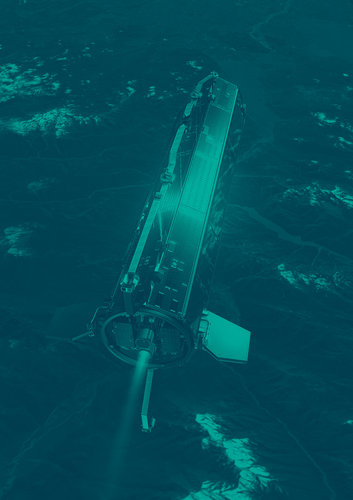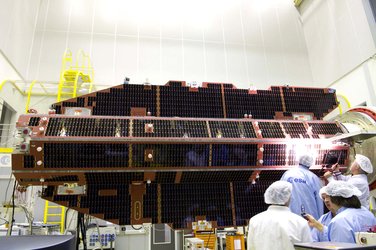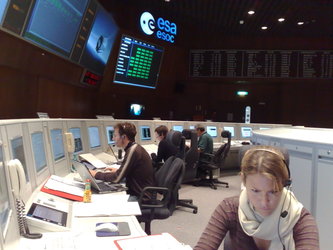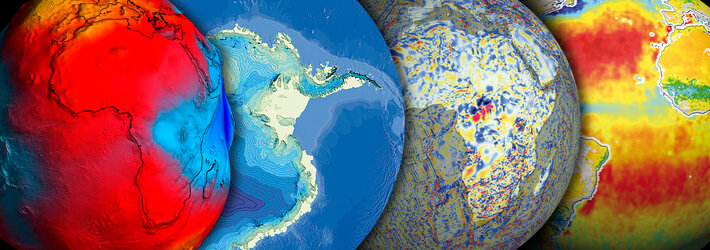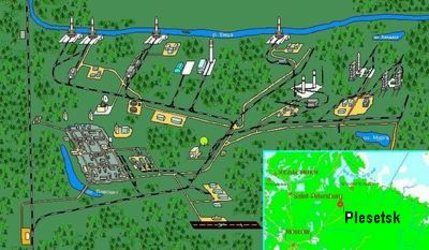GOCE Earth Explorer satellite to look at the Earth’s surface and core
ESA PR 34-2008. The European Space Agency is about to launch the most sophisticated mission ever to investigate the Earth’s gravitational field and to map the reference shape of our planet – the geoid - with unprecedented resolution and accuracy.
The Gravity field and steady-state Ocean Circulation Explorer (GOCE) will be placed onto a low altitude near sun-synchronous orbit by a Russian Rockot vehicle launched from the Plesetsk Cosmodrome in Northern Russia, some 800 km north of Moscow. Lift-off is scheduled to take place at 16:21 CEST (14:21 UTC) on Wednesday 10 September. The launcher is operated by Eurockot Launch Services, a joint venture between EADS Astrium and the Khrunichev Space Centre (Russia).
ESA’s 1-tonne spacecraft carries a set of six state-of-the-art high-sensitivity accelerometers to measure the components of the gravity field along all three axes. The data collected will provide a high-resolution map of the geoid (the reference surface of the planet) and of gravitational anomalies. Such a map will not only greatly improve our knowledge and understanding of the Earth’s internal structure, but will also be used as a much better reference for ocean and climate studies, including sea-level changes, oceanic circulation and ice caps dynamics survey. Numerous applications are expected in climatology, oceanography and geophysics, as well as for geodetic and positioning activities.
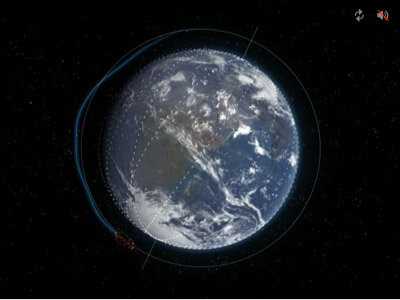
To make this mission possible, ESA, its industrial partners (45 European companies led by Thales Alenia Space) and the science community had to overcome an impressive technical challenge by designing a satellite that will orbit the Earth close enough to gather high-accuracy gravitational data while being able to filter out disturbances caused by the remaining traces of the atmosphere in low Earth orbit (at an altitude of only 260 km). This resulted in a slender 5-m-long arrowhead shape for aerodynamics with low power ion thrusters to compensate for the atmospheric drag.
GOCE is the first Core Mission of the Earth Explorer programme undertaken by ESA in 1999 to foster research on the Earth’s atmosphere, biosphere, hydrosphere, cryosphere and interior, on their interactions and on the impact of human activities on these natural processes. It will be the first in a whole series of Earth Explorer missions with five launches to take place within the next two years.
Two more Core Missions, selected to address specific topics of major public concern are already under development: ADM-Aeolus for atmospheric dynamics (2010), and EarthCARE to investigate the Earth’s radiative balance (2013). Three smaller Earth Explorer Opportunity Missions are also in preparation: CryoSat-2 to measure ice sheet thickness (2009), SMOS to study soil moisture and ocean salinity (2009) and Swarm to survey the evolution of the magnetic field (2010).

On the occasion of the launch of GOCE, ESA will open a Press Centre at ESA/ESRIN in Frascati, Italy from 14:00 to 20:00, hosting a launch event from 15:30 to 18:15.
A live televised transmission of the launch will bring images from Plesetsk and from mission control at ESA/ESOC in Darmstadt, Germany to broadcasters (further details on the TV transmission at http://television.esa.int). ESA senior management and programme specialists will be on hand at ESRIN for explanations and interviews. The general public can also follow the video transmission web-streamed at: http://www.esa.int/goce.
Media representatives wishing to follow the event at ESA/ESRIN or to follow the launch live from one of the other ESA establishments are requested to fill in the accreditation form (linked from the right menu) and to fax it back to the place of their choice.
For further information:
Franco Bonacina,
ESA Spokesman and Head of Media Relations Office
Communication and Knowledge Department
Tel: + 33 1 5369 7299
Fax: + 33 1 6369 7690
e-mail: Franco.Bonacina@esa.int
Dieter Isakeit
Head of the ESA/ESRIN Corporate Communication Office
Communication and Knowledge Department
Tel. +39 06 94180 950
Fax +39 06 94180 952
e-mail: Dieter.Isakeit@esa.int



